
Vientiane Province: The Heart of Laos' Natural and Cultural Splendor
Explore Vientiane Province: A blend of stunning natural landscapes, rich cultural heritage, and thrilling adventures in the heart of Laos.
Vientiane Province, a gem in the heart of Laos, offers a perfect blend of natural beauty and cultural richness. The province is home to breathtaking limestone karst landscapes, lush forests, and serene rivers. Visitors can explore the stunning Vang Vieng area, known for its dramatic scenery and adventurous activities such as kayaking, tubing, and hot air ballooning. The Nam Ngum Reservoir is another highlight, providing opportunities for boating, fishing, and relaxing by its tranquil waters. The province is not just about natural wonders; it also boasts a rich cultural heritage. The ancient city of Vang Xang, with its impressive Buddha carvings dating back to the 11th century, is a must-visit for history enthusiasts. Additionally, the local villages offer a glimpse into traditional Lao life, where you can experience the warm hospitality of the people and learn about their customs and crafts. Food lovers will delight in the local cuisine, which includes fresh river fish, fragrant herbs, and unique Lao dishes. The night markets in Vang Vieng and other towns are great places to sample these culinary delights while enjoying the vibrant atmosphere. Whether you seek adventure, relaxation, or cultural immersion, Vientiane Province has something for every traveler.
Local tips in Vientiane Province
- Visit during the dry season (November to April) for the best weather and outdoor activities.
- Rent a bicycle or motorbike to explore the province at your own pace.
- Don't miss the Tham Chang Cave for its spectacular views and historical significance.
- Try the local dish 'Laap,' a minced meat salad that is a staple in Lao cuisine.
- Carry cash, as many small towns and markets do not accept credit cards.
Vientiane Province: The Heart of Laos' Natural and Cultural Splendor
Vientiane Province, a gem in the heart of Laos, offers a perfect blend of natural beauty and cultural richness. The province is home to breathtaking limestone karst landscapes, lush forests, and serene rivers. Visitors can explore the stunning Vang Vieng area, known for its dramatic scenery and adventurous activities such as kayaking, tubing, and hot air ballooning. The Nam Ngum Reservoir is another highlight, providing opportunities for boating, fishing, and relaxing by its tranquil waters. The province is not just about natural wonders; it also boasts a rich cultural heritage. The ancient city of Vang Xang, with its impressive Buddha carvings dating back to the 11th century, is a must-visit for history enthusiasts. Additionally, the local villages offer a glimpse into traditional Lao life, where you can experience the warm hospitality of the people and learn about their customs and crafts. Food lovers will delight in the local cuisine, which includes fresh river fish, fragrant herbs, and unique Lao dishes. The night markets in Vang Vieng and other towns are great places to sample these culinary delights while enjoying the vibrant atmosphere. Whether you seek adventure, relaxation, or cultural immersion, Vientiane Province has something for every traveler.
When is the best time to go to Vientiane Province?
Iconic landmarks you can’t miss
Patuxay - Victory Monument
Discover the beauty and history of Patuxay, Vientiane's iconic Victory Monument, blending culture and stunning views in Laos.

Chao Anouvong Park
Discover the tranquility of Chao Anouvong Park in Vientiane, a lush retreat perfect for relaxation and cultural exploration along the Mekong River.

Pha That Luang Vientiane
Discover the breathtaking beauty and spiritual significance of Pha That Luang, Laos' iconic golden stupa and national symbol in Vientiane.
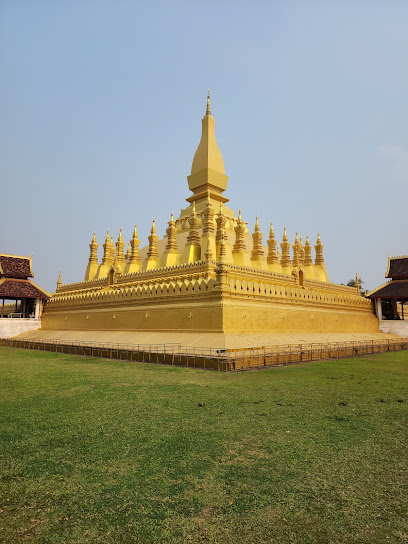
Talat Sao Morning Market
Explore the vibrant Talat Sao Morning Market in Vientiane for an authentic Laotian shopping and culinary experience.
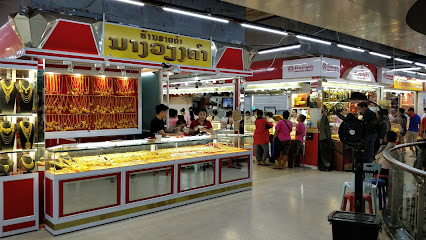
Buddha Park (Wat Xieng Khouane Luang)
Discover the tranquil beauty of Buddha Park, an ecological haven filled with stunning statues and a serene riverside setting in Vientiane, Laos.

Blue Lagoon 1 and Phu Kham Cave Vang Vieng
Explore the stunning Blue Lagoon 1 and Phu Kham Cave in Vang Vieng, Laos, where nature's beauty meets adventure and relaxation.

Wat Si Muang
Experience the serene beauty and rich cultural heritage of Wat Si Muang, a standout Buddhist temple in Vientiane, Laos.

Vientiane Night Market
Experience the vibrant culture and flavors of Laos at the Vientiane Night Market, where shopping and dining come alive under the stars.

Wat Sisaket
Discover the tranquil beauty and rich history of Wat Sisaket, Vientiane's oldest temple, adorned with thousands of Buddha statues.

Phou Khao Khouay National Bio-Diversity Conservation Area
Discover the natural wonders of Phou Khao Khouay National Bio-Diversity Conservation Area, a stunning national park in Laos filled with diverse wildlife and breathtaking landscapes.

Ho Phrakeo Museum
Explore the spiritual heart of Vientiane at Ho Phrakeo Museum, a must-visit destination showcasing Laos' rich cultural heritage and exquisite Buddhist art.

Blue Lagoon 3
Experience the breathtaking beauty of Blue Lagoon 3, a serene oasis in Vang Vieng, Laos, perfect for relaxation and adventure amidst stunning natural landscapes.

Nam Xay Viewpoint
Explore the stunning Nam Xay Viewpoint in Laos, where breathtaking landscapes and adventure await every traveler.

Blue Lagoon 2
Experience the serene beauty of Blue Lagoon 2 in Vangviang, Laos – a perfect blend of relaxation and adventure amidst stunning natural landscapes.

Tham Chang
Explore Tham Chang: A stunning cave in Vang Vieng offering breathtaking views and incredible natural formations in the heart of Laos.

Unmissable attractions to see
ຖ້ຳນອນ ຂີ່ສະລິງ
Discover serenity at Vientiane's Nature Preserve, a lush sanctuary perfect for relaxation, wildlife observation, and educational exploration.

วังเวียง ลาว
Discover the stunning landscapes and vibrant culture of Vang Vieng, Laos, a perfect destination for adventure and relaxation.
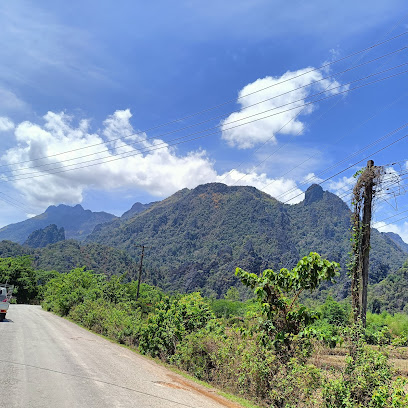
ATV 탑승장
Experience the ultimate adrenaline rush with ATV riding in Vang Vieng, surrounded by stunning landscapes and cultural encounters in Laos.

Essential places to dine
Happy Mango Thai Restaurants
Discover authentic Thai cuisine blended with European flavors at Happy Mango Thai Restaurants in Vang Vieng.
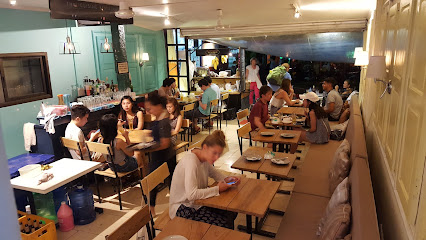
Green Restaurant
Savor the authentic flavors of Laos at Green Restaurant in Vang Vieng - where tradition meets taste in an inviting atmosphere.

Bamboo Bistro Garden
Experience authentic Laotian flavors amidst nature at Bamboo Bistro Garden in Vang Vieng.

Pizza Luka
Experience authentic wood-fired pizzas and fresh salads at Pizza Luka in Vang Vieng – a must-visit culinary destination.

Vela Cafe and Restaurant
Experience authentic Laotian flavors at Vela Cafe and Restaurant in Vang Vieng - where tradition meets taste.

Laung Xai Kham Restaurant
Experience authentic Lao cuisine at Laung Xai Kham Restaurant in Vang Vieng - where delicious flavors meet warm hospitality.

Bon Appetit
Experience authentic French cuisine at Bon Appetit in Vang Vieng, where every meal is a delightful journey through flavors.

Organic Farm Restaurant & Guesthouse
Savor fresh farm-to-table cuisine amidst stunning natural landscapes at Vang Vieng's Organic Farm Restaurant & Guesthouse.

Oh La La Restaurant-Bar
Experience authentic Lao cuisine at Oh La La Restaurant-Bar in Vang Vieng - where flavor meets hospitality!

Sanaxay Restaurant
Experience authentic Laotian cuisine at Sanaxay Restaurant in Vang Vieng – where local flavors meet warm hospitality.
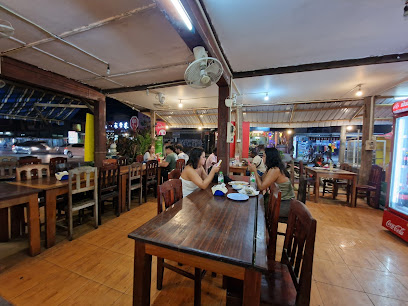
Lotus Restaurant
Experience the true flavors of Laos at Lotus Restaurant in Vang Vieng – where culinary tradition meets fresh ingredients.
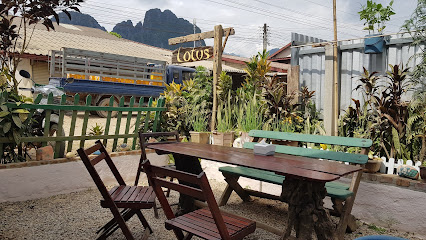
Restaurant du Crabe d'Or
Experience exquisite Asian and Laotian flavors blended with French culinary techniques at Vang Vieng's scenic Restaurant du Crabe d'Or.
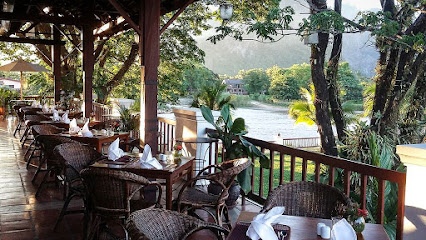
ທົ່ງນາຜາປວກ1ວັງວຽງ
Discover authentic Lao flavors at Thong Na Phak in Vang Vieng – where every meal tells a story!

MittaPhap Restaurant
Discover the vibrant tastes of Lao cuisine at MittaPhap Restaurant in Naka – a culinary treasure offering unforgettable dishes.

Nalee Café & Restaurant
Discover authentic Laotian flavors at Nalee Café & Restaurant in Kasi—where delicious meals meet friendly service in a cozy atmosphere.

Markets, malls and hidden boutiques
Vientiane Center Lao
Experience the vibrant shopping scene at Vientiane Center, a must-visit destination for tourists seeking local culture and modern conveniences.
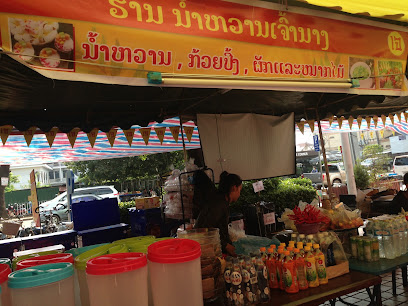
ITECC Mall
Explore ITECC Mall: A modern shopping haven in Vientiane, blending local culture with international flair in a lively atmosphere.

Parkson Laos
Explore Parkson Laos in Vientiane: A vibrant shopping mall featuring diverse retail outlets, dining experiences, and entertainment options for all ages.

HERWORKS Vientiane Flagship Store
Explore HERWORKS Vientiane Flagship Store for unique souvenirs and handicrafts that embody the spirit of Laos.

Talat Sao Shopping Mall 2
Discover the unique blend of shopping and local culture at Talat Sao Shopping Mall 2 in Vientiane, Laos.
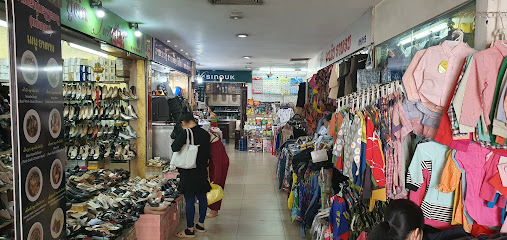
Miniso
Explore Miniso in Vientiane for trendy gifts, unique souvenirs, and affordable essentials in a vibrant shopping atmosphere.

T'Shop Lai Gallery
Explore the charm of Vientiane at T'Shop Lai Gallery, where unique handmade crafts and local artistry come together to create unforgettable souvenirs.

FunBox ບລັອກໆ LAO Vientiane consignment shop Souvenir
Explore FunBox Vientiane for unique Lao souvenirs and local crafts, capturing the essence of your unforgettable journey.

The First
Explore The First in Vientiane for unique souvenirs and authentic Lao crafts that celebrate the rich culture of Laos.

ວາເນດສາ ຂາຍເຄື່ອງຈາກຢູໂຣບ - Vanessa Brands from Europe
Explore Vanessa Brands in Vientiane for stylish bags, exquisite jewelry, and premium cosmetics that embody European elegance.

Momay minimart
Discover the charm of Momay Minimart in Vang Vieng, where local flavors and essentials meet in a delightful shopping experience.
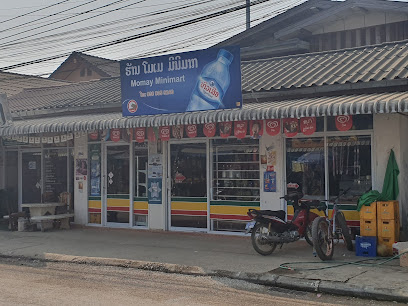
ບ້ານ ນາລ້ອງກວາງ (ຄຸ້ມນາຍາວ) ນີ້ລະ
Explore the vibrant electronics scene at Ban Nalong Kwang, a must-visit store for tech enthusiasts in Record, Laos.

Sky Shop Online | ຮ້ານແມ່ພວງມະໄລ
Discover unique gifts and local flavors at Sky Shop Online in Vientiane, the perfect blend of shopping and cultural experience.

Khidaphone Farmland
Discover the joy of harvesting fresh produce at Khidaphone Farmland, where nature meets culinary delight in the heart of Vientiane.

Lovely Shop
Discover the vibrant shopping experience at Lovely Shop in Vang Vieng, offering beauty supplies, clothing, and unique accessories for all tastes.

Essential bars & hidden hideouts
Tully's Irish Pub
Discover Tully's Irish Pub in Vientiane: a vibrant spot for authentic Irish cuisine, local drinks, and stunning views of Thatluang Lake.

Chokdee Café Belgian Beer Bar
Explore the delightful flavors of Belgium at Chokdee Café, a vibrant beer bar in Vientiane, offering an exquisite menu and stunning riverside views.

Go Dunk
Discover Vientiane's nightlife at Go Dunk, a lively live music bar offering unforgettable performances and a vibrant atmosphere.
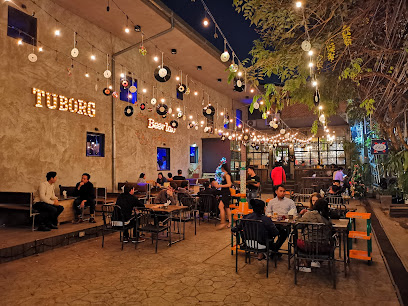
Marktwo
Experience the vibrant nightlife of Vientiane at Marktwo, a bar offering a delightful mix of local drinks and lively entertainment.

525 Eat & Drink
Discover the culinary delights of 525 Eat & Drink in Vientiane, where breakfast, brunch, and cocktails come together in a stunning garden setting.

Moonlight Lounge
Discover the vibrant nightlife of Vientiane at Moonlight Lounge - your go-to spot for great drinks, tasty food, and an unforgettable atmosphere.

The Naga Boat (Bar & Restaurant)
Experience the vibrant atmosphere and delicious local cuisine at The Naga Boat Bar & Restaurant in Vientiane, the perfect riverside retreat.

Laodi Bar Mekong
Discover the vibrant nightlife at Laodi Bar Mekong in Vientiane, blending local culture with a lively bar atmosphere for an unforgettable experience.

Tipsy Elephant Vientiane Rooftop Lounge
Experience the vibrant nightlife of Vientiane at Tipsy Elephant Rooftop Lounge, where stunning views meet exquisite cocktails and lively entertainment.

Indy mini bar
Experience the lively atmosphere and friendly vibes of Indy Mini Bar, the perfect spot for tourists to unwind and enjoy Vang Vieng's nightlife.

Jaidee's Bar & Restaurant
Discover Vang Vieng's nightlife at Jaidee's Bar & Restaurant, where tasty food, refreshing drinks, and a vibrant atmosphere await!
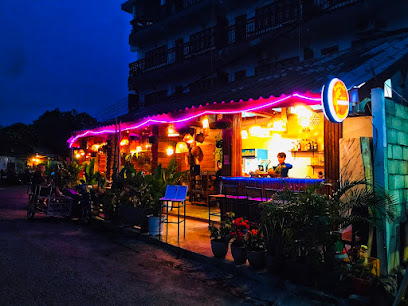
No Name Bar
Experience the vibrant nightlife of Vientiane at No Name Bar, a lively venue with great drinks and a friendly atmosphere.

The Office Bar & Tapas
Discover an unforgettable nightlife experience at The Office Bar & Tapas in Vientiane, where exquisite cocktails and delectable tapas await in a vibrant atmosphere.
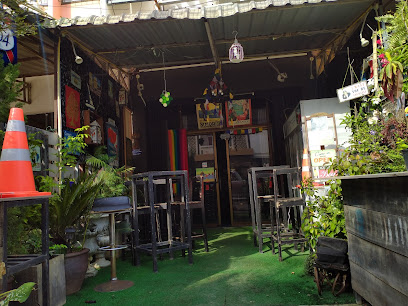
Ohlala bar
Discover the enchanting Ohlala Bar in Vientiane – a cocktail haven with stunning river views and a vibrant atmosphere perfect for nightlife enthusiasts.
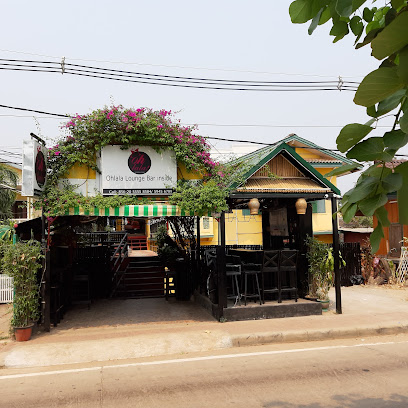
The Big Easy Bar Vang Vieng
Experience the vibrant atmosphere and delicious grill options at The Big Easy Bar in Vang Vieng, a perfect dining spot for all travelers.

Local Phrases about Vientiane Province
-
- Helloສະບາຍດີ
[sa bai dee] - Goodbyeຫຼັງຂ້ອຍຈົນ
[lang khoy jon] - Yesຮ້ອງ
[hong] - Noບໍ່
[bo] - Please/You're welcomeກະລຸນນາ
[ka leum na] - Thank youຂອບໃຈ
[kop jai] - Excuse me/Sorryຂ້າພະເຈົ້າ
[ka pa chai] - How are you?ໂຊກດີບໍ?
[sok dee bo] - Fine. And you?ດີຂ້ອຍດີ. ແລ້ວເຈົ້າ?
[dee khoy dee, laew jon?] - Do you speak English?ເຈົ້າໃນເວວຫນານານໄປໃສຂ້ອຍ?
[jon nai we wa na na pai sai khoy?] - I don't understandຂ້ອຍບໍ່ໃສ່
[khoy bo pai]
- Helloສະບາຍດີ
-
- I'd like to see the menu, pleaseຂ້ອຍຮັບໄມ້ການອາຫານຂ້ອຍອາຕາສອນ
[khoy hap mai kan ahan khoy at saon] - I don't eat meatຂ້ອຍບໍ່ກິນເຂົ້າເກີ
[khoy bo kin khao kae] - Cheers!ສະບາຍດີ
[sa bai dee] - I would like to pay, pleaseຂ້ອຍສາມາດຈ່າຍການ
[khoy samat chai kan]
- I'd like to see the menu, pleaseຂ້ອຍຮັບໄມ້ການອາຫານຂ້ອຍອາຕາສອນ
-
- Help!ຊ່ວຍດີ!
[suey dee!] - Go away!ທີ່ດີ!
[tee dee!] - Call the Police!ໂທ້ວາຮິດ!
[to wa hit!] - Call a doctor!ໂທ້ວາພາສາພະຍາຊາຊານ!
[to wa pha sa pa nya sa na] - I'm lostຂ້ອຍຕົກຕົນ
[khoy tok ton] - I'm illຂ້ອຍເກົ່າ
[khoy kae]
- Help!ຊ່ວຍດີ!
-
- I'd like to buy...ຂ້ອຍຮັບການຊື້...
[khoy hap kan sum...] - I'm just lookingຂ້ອຍການອັນດຸນເຂົ້າ
[khoy kan nan dun khao] - How much is it?ມື້ແລະມື້ເປັນຂ້ອຍ?
[mue laew mue pen khoy?] - That's too expensiveນີ້ຂ້ອຍຂ້ອຍປີ
[ni khoy khoy bi] - Can you lower the price?ເຈົ້າຈະລົງລະບົບເປັນຂ້ອຍແທ້ມງາມບໍ?
[jon ha long lauap pen khoy tham nam bo?]
- I'd like to buy...ຂ້ອຍຮັບການຊື້...
-
- What time is it?ເວລາແລ້ວ?
[we laew?] - It's one o'clockແລ້ວແລະທີ 1
[laew lae to 1] - Half past (10)ກັນເວລາ 10
[kan we laew 10] - Morningເຊົ້າ
[sao] - Afternoonແມນທ່ຽນ
[maen thian] - Eveningເຈັນ
[jan] - Yesterdayມື້ວາດວາ
[mue wa dua] - Todayມື້ນີ້
[mue ni] - Tomorrowມື້ອື່ນ
[mue un] - 1ໜ້າ
[na] - 2ສອງ
[song] - 3ສາມ
[sam] - 4ສີ
[si] - 5ຫ້າ
[ha] - 6ເຈັນ
[jan] - 7ແປດ
[paet] - 8ເກົ່າ
[kae] - 9ເອັນ
[en] - 10ສິບ
[sip]
- What time is it?ເວລາແລ້ວ?
-
- Where's a/the...?ຢ່າໄດ້ບໍ່...?
[ya dai bo...?] - What's the address?ທີ່ຢູ່ຮູບເປັນຫນຶ່ງ?
[tee yu hup pen nung?] - Can you show me (on the map)?ທ້າວວ່ານໍາມາດນັກຂ້ອຍ?
[tao wa nam mat nak khoy?] - When's the next (bus)?ກັນເວລາຖືກຕ້ອງນັ້ນ?
[kan we tua tong nan?] - A ticket (to ....)ປະກາດ (...)
[pa kat (...)]
- Where's a/the...?ຢ່າໄດ້ບໍ່...?
History of Vientiane Province
-
Vientiane Province's history dates back to ancient times with evidence of early human settlements. The region was part of the Mon-Khmer civilizations before the rise of the Lao kingdom of Lan Xang in the 14th century. Archaeological sites, such as those near Vang Vieng, reveal artifacts and structures that offer a glimpse into the lives of the region's early inhabitants.
-
In 1353, Fa Ngum founded the Lan Xang Kingdom, which means 'Land of a Million Elephants.' Vientiane Province became a significant area within this kingdom. The establishment of Lan Xang marked the beginning of a unified Lao identity, with Vientiane playing a crucial role in the kingdom's administration, culture, and religion.
-
During the late 19th and early 20th centuries, Vientiane Province, like the rest of Laos, fell under French colonial rule. The French influence is evident in the architecture and urban planning of Vientiane City. Colonial buildings, such as the Presidential Palace and various villas, reflect the blend of French and Lao architectural styles.
-
In the mid-20th century, the Pathet Lao, a communist political movement, gained significant influence in Vientiane Province. The region saw numerous conflicts during the Laotian Civil War (1959-1975) as the Pathet Lao fought against the Royal Lao Government. The movement eventually led to the establishment of the Lao People's Democratic Republic in 1975.
-
Today, Vientiane Province is known for its vibrant cultural festivals, which attract visitors from around the world. One of the most prominent is the Boun Bang Fai (Rocket Festival), an annual event held in May to encourage rainfall for the rice-growing season. Another significant celebration is the That Luang Festival in November, honoring the Great Stupa (Pha That Luang), a national symbol of Laos.
-
Buddhism plays a central role in the cultural and spiritual life of Vientiane Province. The region is home to numerous temples and monasteries, such as Wat Si Muang and Wat Sok Pa Luang. These religious sites are not only places of worship but also centers for traditional education and community activities.
Vientiane Province Essentials
-
Vientiane Province is easily accessible by air, road, and river. The nearest international airport is Wattay International Airport in Vientiane, the capital city of Laos. From the airport, you can take a taxi or hire a car to reach your destination within the province. Buses and minivans also operate from Vientiane city to various parts of the province. Additionally, you can enjoy a scenic boat ride along the Mekong River to reach some areas.
-
Once in Vientiane Province, you can get around using local transport options such as tuk-tuks, songthaews (shared trucks), and taxis. For longer journeys, buses and minivans are available. Renting a motorbike or bicycle is also a popular option for exploring the area at your own pace. Keep in mind that traffic can be chaotic, so always exercise caution when driving.
-
The official currency in Laos is the Lao Kip (LAK). Credit cards are accepted in some hotels, restaurants, and larger shops, but it is advisable to carry cash, especially in rural areas. ATMs are available in Vientiane city, but they may be scarce in smaller towns and villages. It is wise to withdraw sufficient cash before traveling to remote areas.
-
Vientiane Province is generally safe for tourists, but it is always best to take standard precautions. Avoid walking alone at night in unfamiliar areas and keep an eye on your belongings in crowded places. Petty theft, such as bag snatching, can occur in tourist areas. Be cautious and vigilant, especially in busy markets and popular tourist spots.
-
In case of emergency, dial 1190 for police assistance or 1195 for medical emergencies. There are hospitals and clinics in Vientiane city, and some medical facilities in larger towns within the province. It is recommended to have travel insurance that covers medical emergencies. For minor health issues, pharmacies are available in the main towns where you can purchase over-the-counter medications.
-
Fashion: Do dress modestly, especially when visiting religious sites. Avoid wearing revealing clothing. Religion: Do respect local customs and traditions. Always remove your shoes and cover your shoulders and knees when entering temples. Public Transport: Do be respectful and give up your seat to elderly passengers. Don't eat or drink on public transport. Greetings: Do greet people with a slight bow and a 'Sabaidee' (hello). A smile goes a long way. Eating & Drinking: Do try local delicacies and accept food offerings graciously. Don't refuse hospitality, as it is considered impolite.
-
To experience Vientiane Province like a local, visit the bustling morning markets where you can buy fresh produce and traditional Lao goods. Engage with locals, as they are often friendly and willing to share stories about the region's history and culture. Don't miss visiting the Phou Khao Khouay National Protected Area for hiking and wildlife spotting. For a unique experience, take a boat trip along the Nam Ngum River and explore the scenic islands and fishing villages.
Trending Landmarks in Vientiane Province
-
Patuxay - Victory Monument
-
Chao Anouvong Park
-
Pha That Luang Vientiane
-
Talat Sao Morning Market
-
Buddha Park (Wat Xieng Khouane Luang)
-
Blue Lagoon 1 and Phu Kham Cave Vang Vieng
-
Wat Si Muang
-
Vientiane Night Market
-
Wat Sisaket
-
Phou Khao Khouay National Bio-Diversity Conservation Area
-
Ho Phrakeo Museum
-
Blue Lagoon 3
-
Nam Xay Viewpoint
-
Blue Lagoon 2
-
Tham Chang
Nearby Cities to Vientiane Province
-
Things To Do in Luang Prabang
-
Things To Do in Phonsavan
-
Things To Do in Vientiane
-
Things To Do in Xieng Khouang
-
Things To Do in Nan
-
Things To Do in Loei
-
Things To Do in Udon Thani
-
Things To Do in Muang Sing
-
Things To Do in Chiang Rai
-
Things To Do in Thakhek
-
Things To Do in Sukhothai
-
Things To Do in Chiang Mai
-
Things To Do in Savannakhet
-
Things To Do in Pai
-
Things To Do in Sapa










